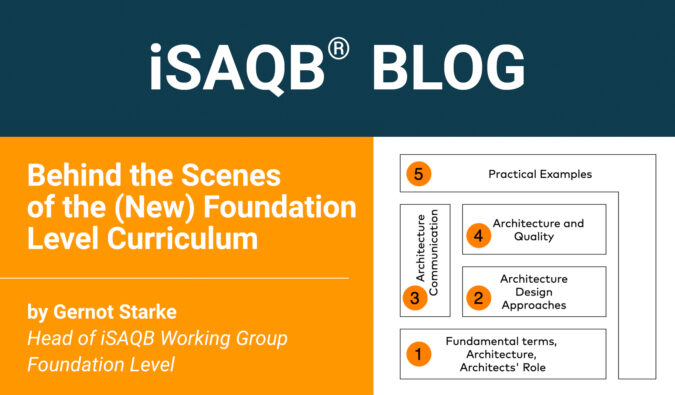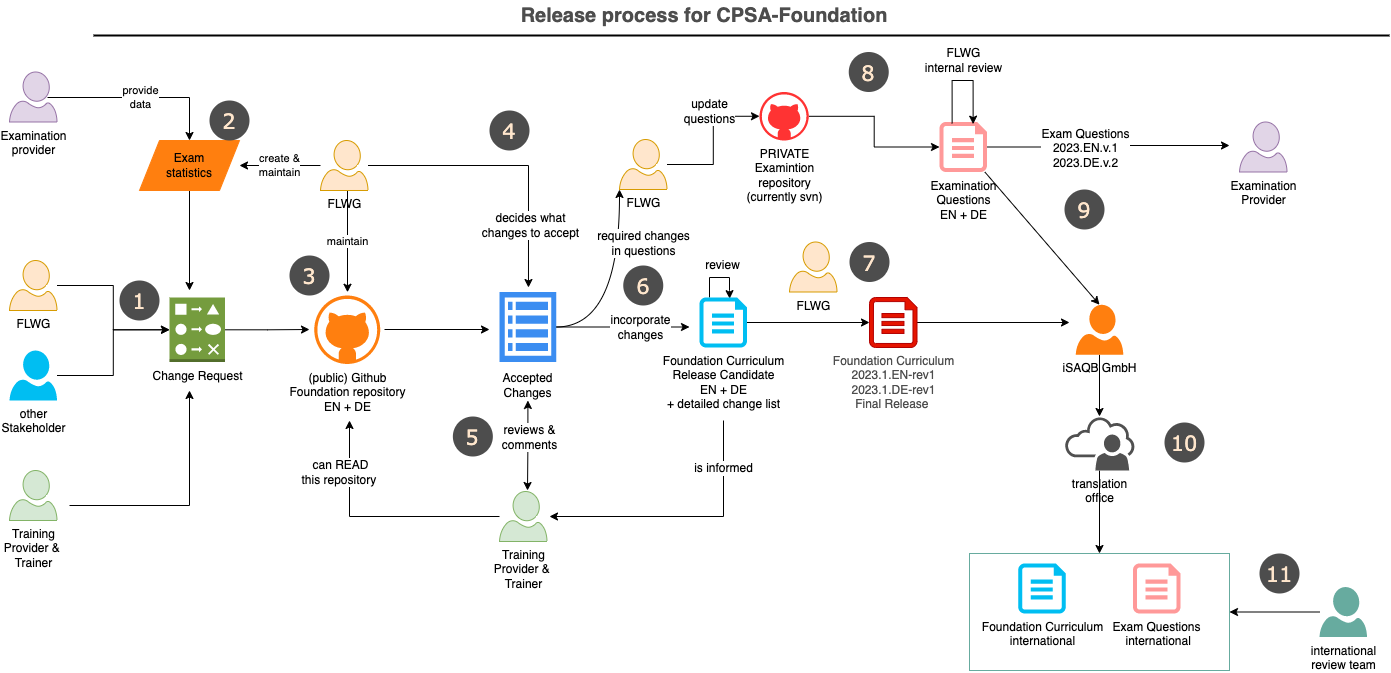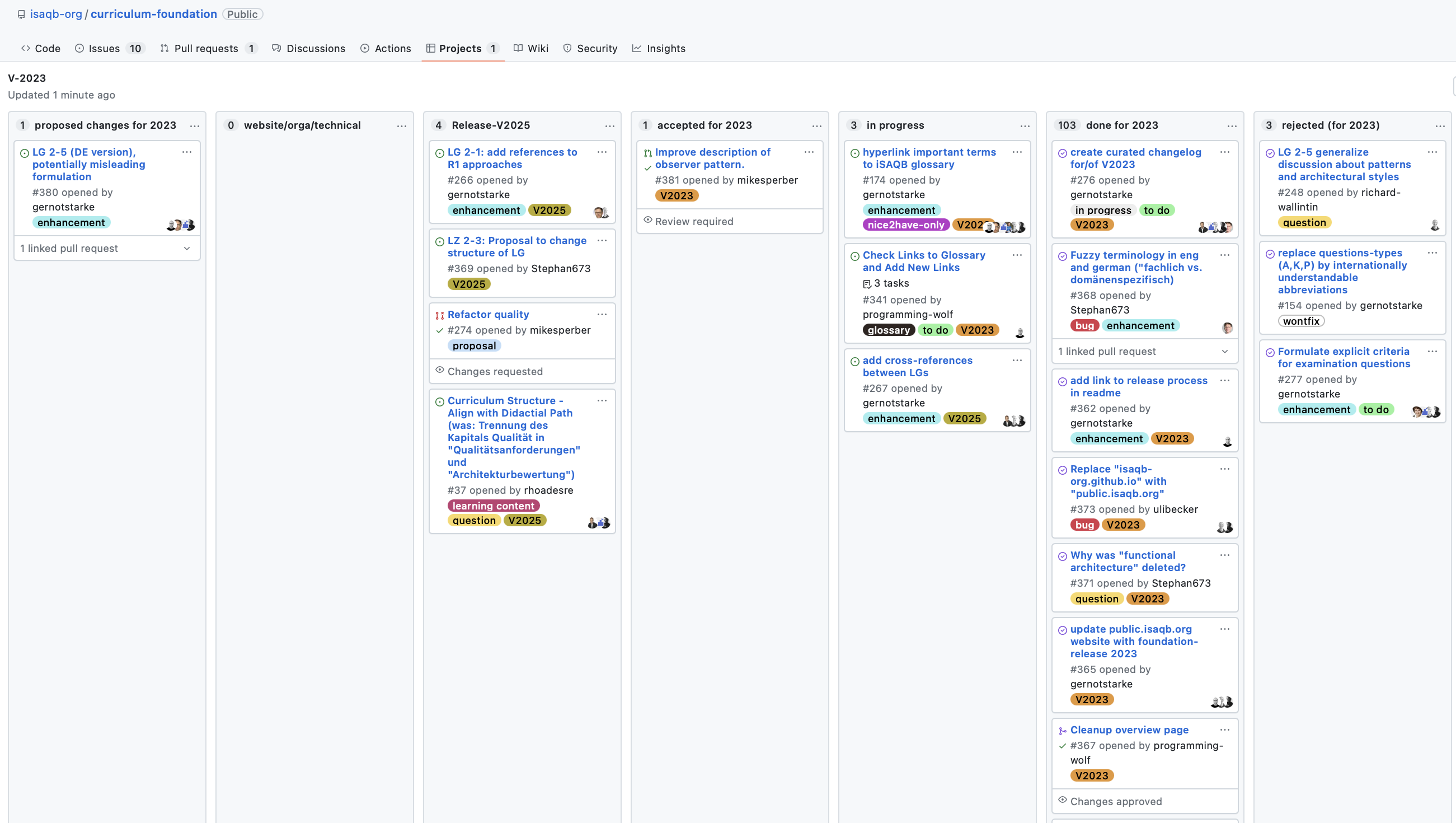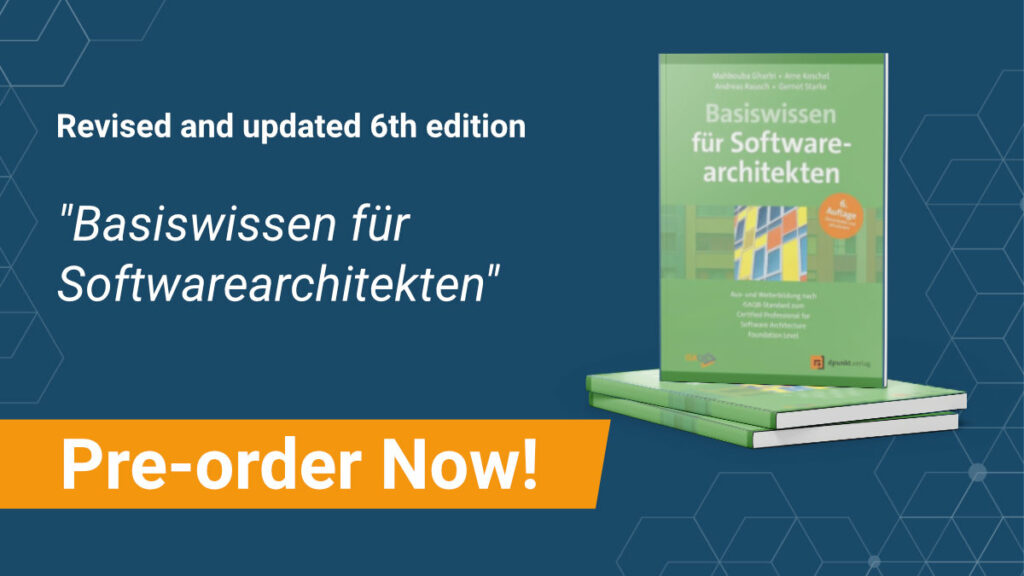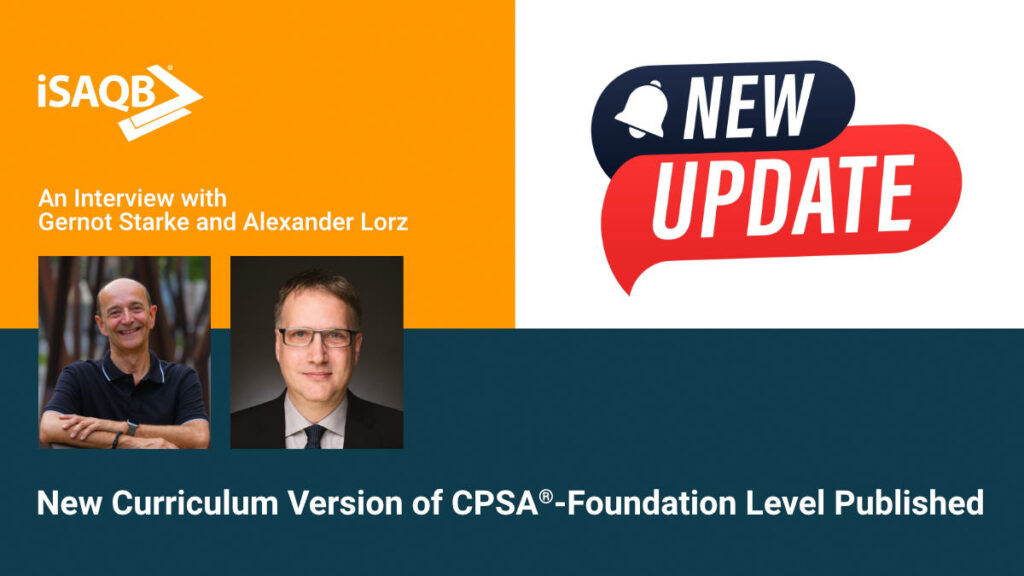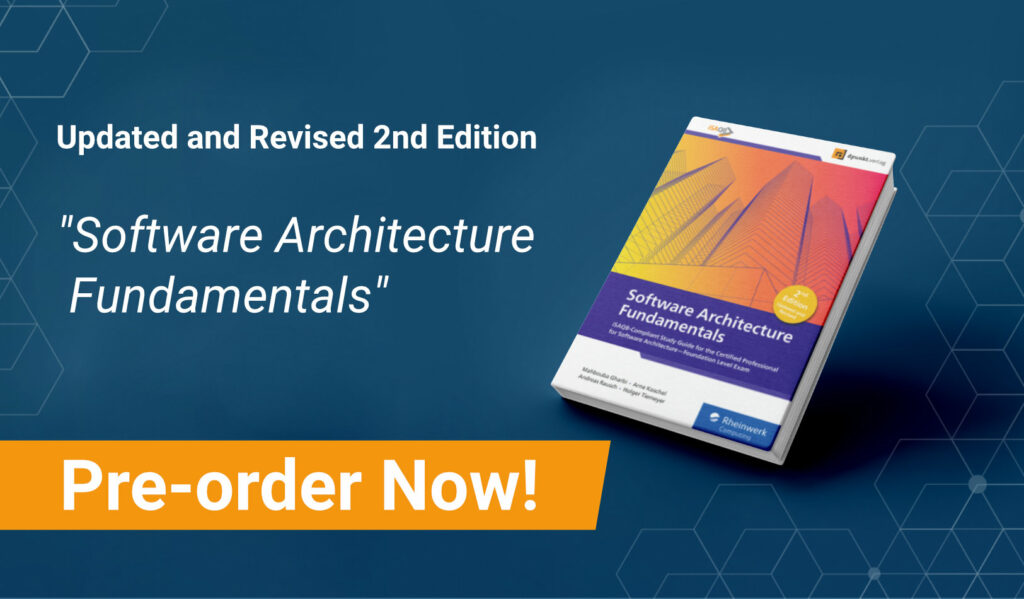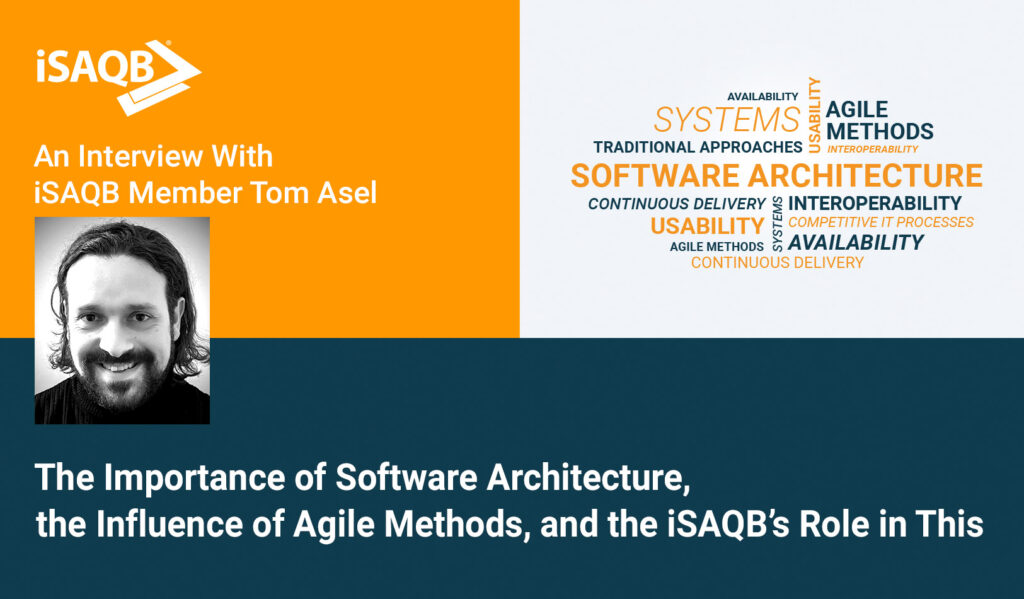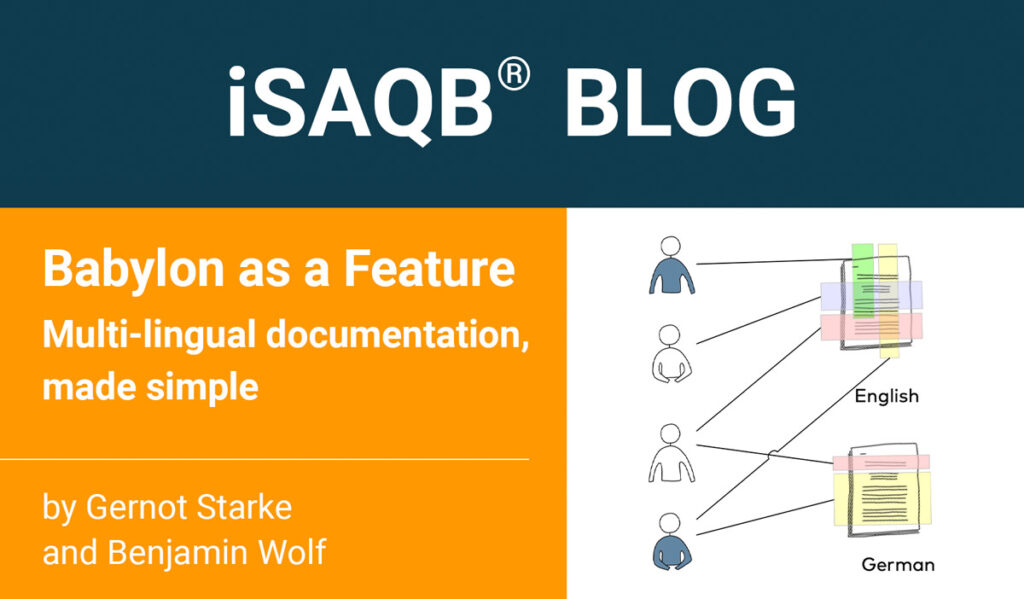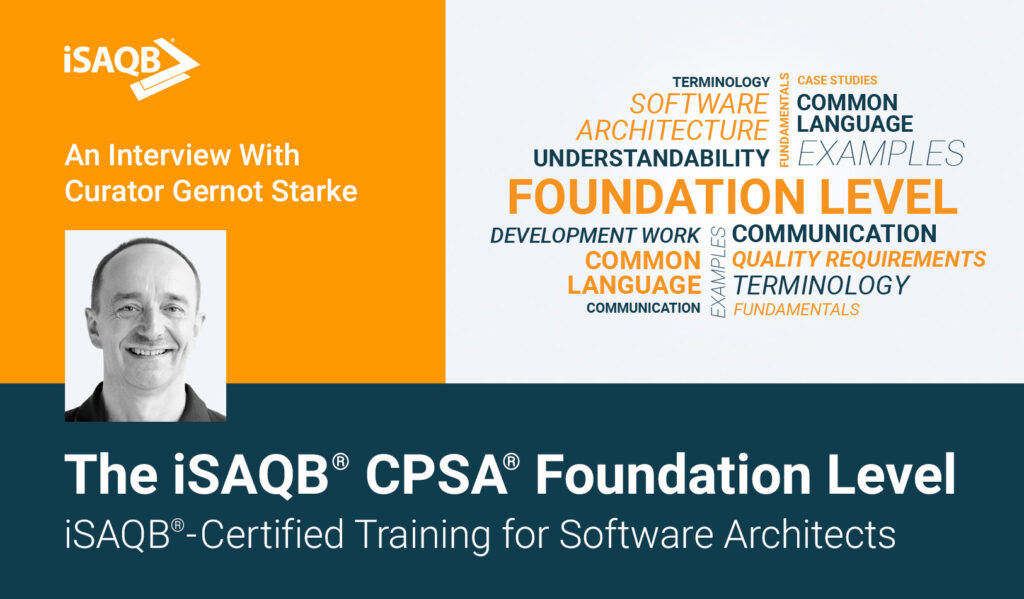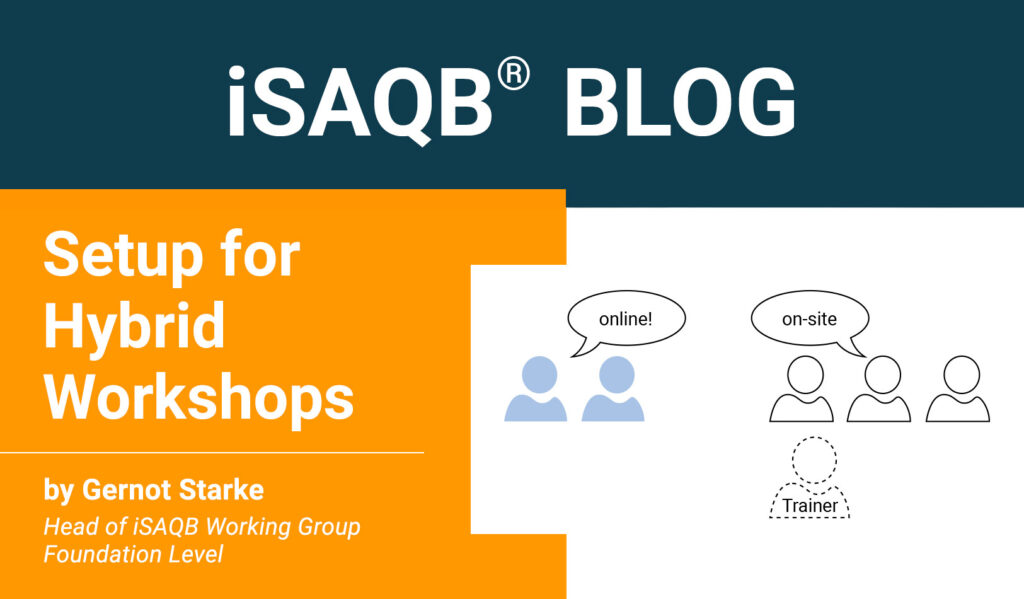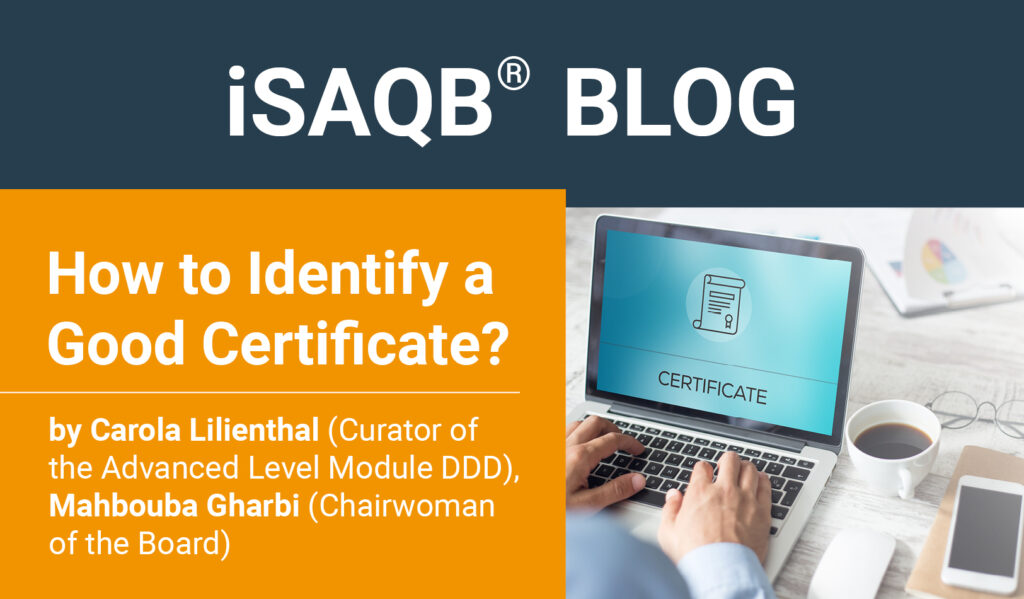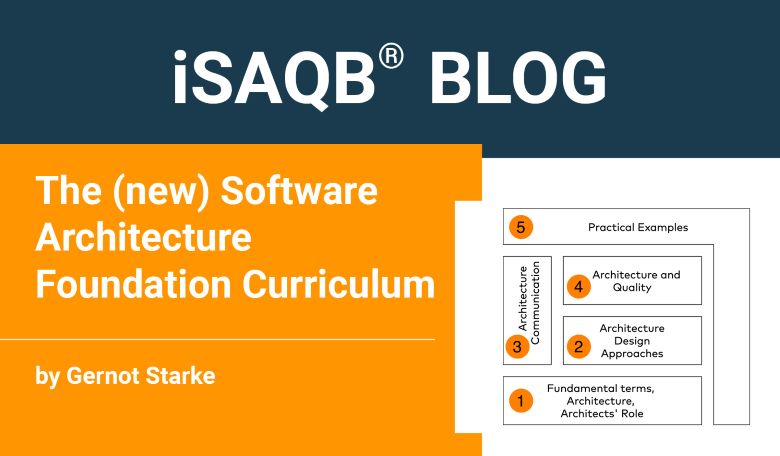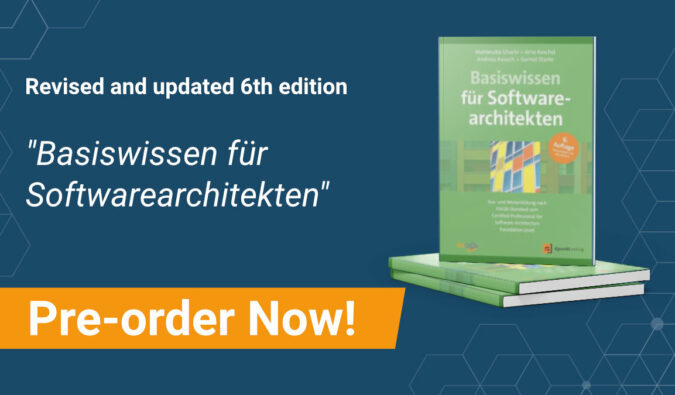Behind the scenes of the (new) Foundation Level curriculum
The time had come again: The new release of the iSAQB Foundation curriculum came out just in time at the beginning of April 2023.
Alongside key differences compared to the previous version, this blog post explains how work is undertaken within an international and decentral association and what methods and tools we use.
Why a new release?
The high degree of dynamism in the IT sector and software development prompts us to regularly review even the fundamental Software architecture training with regard to structure and content: Are there any new approaches or methods in our discipline? Has the priority or practical importance of existing topics changed?
In particular, we ask many Foundation training participants and trainers around the world for feedback or suggestions for improvements.
Although we receive little response to these questions, it is nevertheless very important for the responsible Foundation Level Working Group (FLWG).
Stable release cycle
The FLWG already agreed on a two-year release cycle back in 2018. The reason for this supposed long release period is the high workload involved in each release. Figure 1 shows the schematic release process:
Click on image to enlarge.
Figure 1: Foundation curriculum release process
Above all, the wide range of stakeholders affected speaks against shorter releases:
- Over 150 accredited trainers worldwide, who need to incorporate the updates to the curriculum (manually) into their respective training documents.
- There are also dozens of training providers, who develop training materials and organize training courses.
- Examination companies, who receive official examination questions from the iSAQB but need to convert them into their own, proprietary technical formats.
- Members of the Foundation Level Working Group (FLWG), who actively contribute and/or proofread.
- iSAQB GmbH, which publishes the curricula and examination questions in a variety of languages (such as Spanish, Italian, etc.).
- The translation agencies, that translate the curricula from English or German into other languages. This translation, in turn, undergoes quality assurance by international review teams.
Especially the last point, the translations into other languages, is both expensive and protracted due to the necessary review processes. As a result, the FLWG and iSAQB wanted the 24-month cycle time in order to keep this workload within reasonable limits.
The curriculum is also crucial for the (strictly confidential) examination questions, which, in turn, need to be converted by more than a dozen examination companies into various electronic formats (for online examinations) or printed formats (for on-site examinations).
Changes compared to 2021
The most important thing first: The proven fundamental structure has been completely retained: The five chapters (see Figure 2) have been providing a clean structure for the Foundation curriculum for many years.
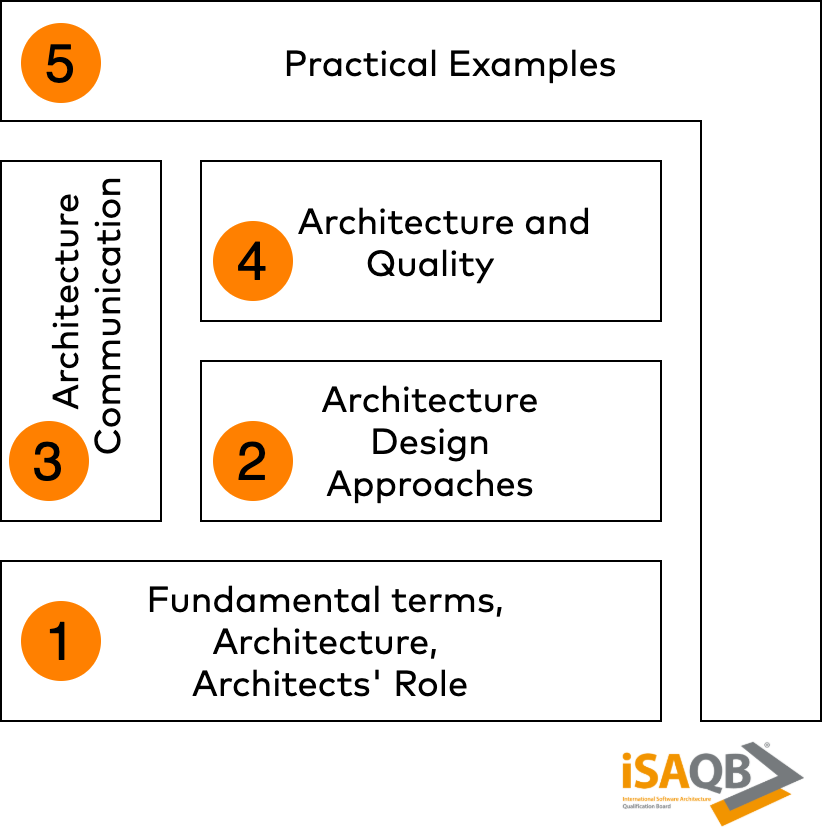
Figure 2: Chapter structure of the Foundation curriculum V‑2023
I have already explained the importance of these chapters in a previous blog post.
The content changes to the curriculum V‑2023 are rather small in nature. Overall, the curriculum was formulated and structured more clearly in important points.
Synopsis 1 provides an overview (here: “LG” = learning goal).
LG 1–6, LG 1–7: Examination relevance reduced
LG 1–10: Cloud-native systems added as a type of IT system
LG 2–3: Title changed
LG 2–5: Various patterns changed slightly in the wording
LG 2–10: New learning goal “Principles of software deployments”
LG 3–1: Title changed
LG 3–2: Expanded with the old LG 3–9 for better cohesion of content
LG 3–9: New number, was previously 3–10
LG 4–3 & LG 4–4: More consistent choice of words in both learning goals
Many literature references and online links corrected, some sources added or updated
Synopsis 1: Summary of important changes in V‑2023 compared to V‑2021
Voluntary and dispersed – analogous to open source
The work on the Foundation curriculum (and, incidentally, all other iSAQB curricula) is based on the voluntary involvement of interested parties, who have come together in the Foundation Level Working Group under the aegis and the statutes of iSAQB. At first glance, this form of organization barely differs from many open-source projects – so, what could be more obvious than to use proven means of (open-source) software development to organize work?
Several years ago, we switched over the maintenance of the Foundation curriculum from a proprietary Office format to AsciiDoc and moved to a public GitHub repository.
We therefore use GitHub issues and a corresponding task board to coordinate tasks (see Figure 3, online at [flwg-tasks]). On closer inspection, you can see that the FLWG has completed over a hundred “issues” for the 2023 release.
Click on image to enlarge.
Figure 3: (Extract from) Foundation Curriculum Task Board
iSAQB documents are built like software
As all of the content, such as learning goals, is maintained in AsciiDoc, we can treat it exactly like source code: Maintain a precisely traceable version history, detect differences properly with diff, and – what pleases us in the FLWG the most: build automatically. We have explained the background to this in more detail in the blog post “Babylon-as-a-feature” (see [babylon-feature]).
We would like to highlight some key properties here:
- Our automatism is 100% based on free software, i.e., no proprietary installation is required for collaboration.
- The FLWG is only responsible for the languages English and German, others lie within the responsibility of iSAQB GmbH or the translation agencies.
- Our automatism generates PDFs and HTML in a standardized iSAQB layout. More on this follows below.
- Documents are semantically versioned; details can be found under [versions].
Standardized layout thanks to Git
iSAQB would like all official documents to have a uniform layout wherever possible – so, what could be more obvious here than automating the styling as fully as possible?
AsciiDoc (see [asciidoc]) offers elegant possibilities here: Flexible format templates for PDF as well as the integration of one’s own style sheets into HTML generation. The iSAQB standard layouts can each be found in their own GitHub repositories (see e.g., [pdftheme]) and are integrated into curricula as Git submodules.
This technical trick allows iSAQB to avoid the redundant maintenance of formats or styling, while also enabling new curricula to be created easily.
Other standardized elements now also flow from curricula (such as license terms and copyright notices) into the generation of curricula via Git submodules.
A (small) layer‑8 problem
However, particularly with the Foundation curriculum, we have reached the limits of this elegant solution: Some of the stakeholders mentioned above, particularly translation agencies and international reviewers, insist upon proprietary Office formats for the documentation. This is due less to weaknesses in our AsciiDoc tool chain and more to human factors – known as a layer‑8 problem in the industry. iSAQB GmbH acts here as an “adapter pattern” – and manually produces the necessary PDF documents, such as for Italian or Spanish, on the basis of Office documents.
Conclusion
The new version of the Foundation curriculum is cleaner and better organized, has been dusted off somewhat and spiced up with a few interesting new details. The Foundation Level Working Group would be pleased to receive feedback!
Acknowledgment
Thank you to all those involved in the new curriculum release, and special thanks to Dr. Alexander Lorz for reviewing this article, and Ben Wolf for his massive contribution.
References
[flwg-tasks]: Task board for the Foundation Working Group
[cpsa-github] The public GitHub repository for the Foundation Level, curriculum with tasks/issues
[babylon] Gernot Starke, Benjamin Wolf: Babylon-as-a-Feature: Multi-lingual documentation, made simple
[asciidoc] https://asciidoctor.org/
[versions] https://github.com/isaqb-org/github-readme
[pdftheme] https://github.com/isaqb-org/pdf-theme
[layer8] https://en.wikipedia.org/wiki/Layer_8
[glossary] iSAQB Glossary of Software Architecture Terminology. A free book explaining terms from the iSAQB curricula
[download] The iSAQB download site
[exam-guide] Gernot Starke + Alexander Lorz: Software Architecture Foundation – Exam preparation guide. VanHaren International, 2021. This book explains all of the learning goals in detail, and helps to perfectly prepare for the CPSA Foundation certification (both for the old and the new curriculum!)
Share this article:
Related Posts
About the Author


